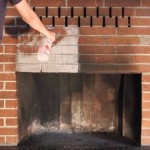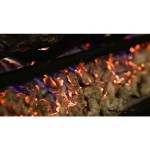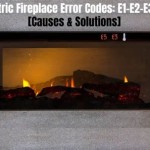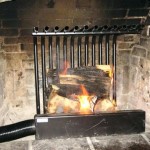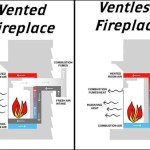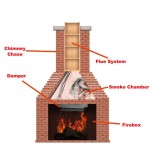```html
Wall Insert Gas Fireplaces: A Comprehensive Guide
Wall insert gas fireplaces represent a modern and efficient heating solution for homeowners seeking the ambiance of a traditional fireplace without the complexities of wood-burning models. These units are designed to be installed directly into a wall, offering a streamlined and space-saving aesthetic. The technology behind these fireplaces has advanced significantly, providing improved efficiency, safety features, and a variety of design options to complement diverse home decor styles.
The popularity of wall insert gas fireplaces stems from several key advantages. Compared to traditional wood-burning fireplaces, gas inserts offer convenience through instant ignition and adjustable flame height. They also eliminate the need for wood storage and the associated mess of ash and soot. Furthermore, modern gas inserts boast high energy efficiency, converting a significant portion of the fuel into usable heat, resulting in lower heating costs compared to older models.
Selecting the Right Wall Insert Gas Fireplace
Choosing the appropriate wall insert gas fireplace requires careful consideration of several factors. The size of the room is a primary determinant, influencing the BTU (British Thermal Unit) output needed to effectively heat the space. A fireplace with insufficient BTU output will struggle to maintain a comfortable temperature, while an oversized unit can lead to overheating and energy waste. Calculating the square footage of the room and consulting with a fireplace professional are essential steps in determining the optimal BTU rating.
The venting system is another crucial aspect to evaluate. Direct vent fireplaces draw combustion air from outside and exhaust the fumes directly outdoors, eliminating the need for a traditional chimney. Vent-free models, on the other hand, use room air for combustion and release exhaust gases into the room. While vent-free options offer easier installation, they require strict adherence to safety regulations, including the installation of carbon monoxide detectors, and may not be suitable for all homes or individuals due to indoor air quality concerns. Local building codes and manufacturer recommendations should be consulted to ensure compliance and safety.
Finally, aesthetic preferences play a significant role in the selection process. Wall insert gas fireplaces are available in a wide range of styles, from contemporary designs with clean lines and minimalist features to more traditional models that mimic the appearance of a wood-burning fireplace. The type of firebox lining, log set, and decorative accessories can be customized to create a unique and personalized look. Considering the existing decor and architectural style of the home is essential to selecting a fireplace that integrates seamlessly into the space.
Installation and Maintenance Considerations
Proper installation is paramount to the safe and efficient operation of a wall insert gas fireplace. While some homeowners with experience in plumbing and electrical work may be tempted to undertake the installation themselves, it is generally recommended to hire a qualified and licensed professional. Gas line connections, venting systems, and electrical wiring require specialized knowledge and skills to ensure compliance with safety codes and prevent potential hazards such as gas leaks or carbon monoxide poisoning.
The installation process typically involves preparing the wall opening, running gas and electrical lines, installing the venting system, and connecting the fireplace unit. A professional installer will also ensure that the fireplace is properly sealed and insulated to prevent drafts and heat loss. Following the manufacturer's instructions and local building codes is crucial for a safe and compliant installation.
Regular maintenance is essential to keep a wall insert gas fireplace operating efficiently and safely. The frequency of maintenance tasks will vary depending on the type of fireplace and the manufacturer's recommendations. However, some common maintenance procedures include cleaning the burner assembly, inspecting the venting system, and checking the gas line connections. A qualified technician should perform a thorough inspection and cleaning of the fireplace at least once a year, ideally before the start of the heating season. This will help to identify and address any potential problems before they escalate into costly repairs or safety hazards.
Safety Features and Operational Guidelines
Modern wall insert gas fireplaces are equipped with a range of safety features designed to protect homeowners from potential hazards. These features typically include a safety pilot system that automatically shuts off the gas supply if the flame is extinguished, preventing gas leaks. Some models also incorporate oxygen depletion sensors (ODS) that monitor the oxygen levels in the room and shut off the fireplace if the oxygen level drops below a safe threshold.
Tempered glass fronts are commonly used to prevent accidental burns and contain sparks. However, it is important to remember that the glass can still become hot during operation and should not be touched. Protective screens or barriers can be installed to further reduce the risk of burns, especially in households with young children or pets.
Following operational guidelines is crucial for safe and efficient use of a wall insert gas fireplace. Never operate the fireplace with flammable materials nearby, such as curtains, furniture, or paper. Ensure that the area around the fireplace is clear of obstructions and that the venting system is unobstructed. If you smell gas, immediately turn off the fireplace, evacuate the premises, and contact your local gas company or fire department. Regularly inspect the fireplace for any signs of damage or malfunction and promptly address any issues. Adhering to these safety precautions will help to ensure that your wall insert gas fireplace provides warmth and ambiance safely and reliably for years to come.
Beyond safety, understanding the fireplace's operation allows for optimized heating. Familiarizing oneself with the control panel, thermostat settings, and flame adjustments enables customized heat output based on individual comfort levels and weather conditions. Many modern units also feature remote controls for added convenience, allowing users to adjust settings from anywhere in the room.
The efficiency of a wall insert gas fireplace is directly tied to proper operation and maintenance. Regularly cleaning the glass front maximizes radiant heat output, while ensuring the burner is free of debris guarantees efficient gas combustion. Understanding the specific energy consumption of the model and adjusting usage accordingly can lead to significant cost savings over the long term.
Investing in a programmable thermostat can further enhance efficiency. These thermostats allow users to set specific heating schedules based on occupancy patterns, reducing energy waste when the room is unoccupied. Smart thermostats offer even greater control, allowing users to monitor and adjust settings remotely via a smartphone or tablet.
```
Fire Ribbon Direct Vent Slim Gas Fireplace Spark Modern Fires

One6 Vf SÓlas Contemporary Fireplaces

Napoleon Whd48 Plazmafire Wall Hanging Fireplace

SÓlas Twenty6 Wall Mount Direct Vent Gas Fireplace Toronto Home Comfort

Fire Ribbon Direct Vent Slim Gas Fireplace Spark Modern Fires

Wall Mounted Gas Fireplace Black Frame Lava Fires

Stylish Fireplace Wall Inserts For Cozy Ambiance

SÓlas Forty6 Wall Mount Direct Vent Gas Fireplace Toronto Home Comfort

Solas Twenty6 Wall Mounted Direct Vent Gas Fireplace 58 Off

Plazmafire Vf24 Whvf24 Ambassador Fireplaces
Related Posts

